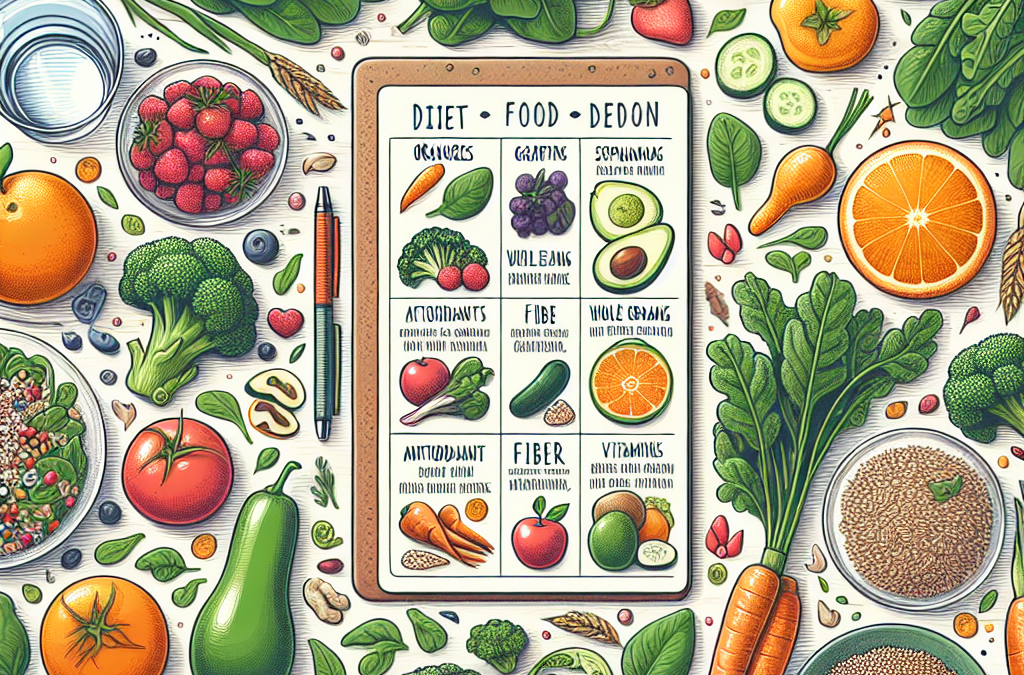Table of Contents
- 1. Choose Local and Seasonal Produce
- 2. Proper Storage Techniques
- 3. Buy from Trusted Sources
- 4. Prioritize Organic Options
- 5. Use Fresh Fruits and Veggies Quickly
- 6. Extend Freshness with Proper Packaging
- 7. Incorporate Preservation Methods
- 8. Cultivate Your Own Garden
- 9. Stay Informed About Trends and Innovations
- 10. Educate Yourself on Nutritional Benefits
1. Choose Local and Seasonal Produce
Supporting Local Farmers
In 2025, one of the most effective tips for ensuring your fresh fruits and veggies stay at their peak is to buy locally. Local farmers often harvest produce at the right ripeness and supply directly to consumers, which means you’re getting fresher, more nutritious options. Visiting farmers’ markets or joining community-supported agriculture (CSA) programs not only supports local economies but also guarantees higher quality produce.
For example, shopping at your local farmers’ market during the summer months offers an abundance of ripe berries, tomatoes, and zucchiniâfeatures that are often less flavorful and less nutritious when shipped long distances. As research highlights, locally sourced produce retains more nutrients and flavor, making your healthy eating habits more effective.
Seasonal Eating for Freshness and Nutritional Value
Eating with the seasons aligns perfectly with the goal of maintaining fresh fruits and veggies. Seasonal produce is harvested at its peak, ensuring maximum flavor and nutrients. In 2025, the trend toward seasonal eating is stronger than ever, supported by technology that alerts consumers about what’s in season in their region.
When you prioritize seasonal fruits like peaches in summer or squash in fall, you get produce thatâs naturally ripe and has traveled less, reducing spoilage and nutrient loss. This practice also helps you enjoy variety throughout the year and supports more sustainable farming practices.
2. Proper Storage Techniques
Optimizing Freshness with Right Storage Conditions
Storing fresh fruits and veggies properly is key to preserving their freshness and nutritional quality. Each type of produce has specific requirements. For instance, leafy greens last longer when stored in crisper drawers with high humidity, while fruits like apples and citrus benefit from refrigeration.
In 2025, smart storage containers equipped with technology that monitors humidity and temperature are becoming popular, making it easier to keep your produce fresh for longer periods. Proper storage not only extends shelf life but also prevents wasteâcrucial as food waste numbers remain high globally.
Common Storage Mistakes to Avoid
A common mistake is storing all produce together, which can cause rapid spoilage. For example, tomatoes release ethylene gas that accelerates ripening and spoilage of nearby fruits and veggies. Keeping ethylene-sensitive greens away from ethylene producers helps maintain quality.
Another tip is to keep root vegetables like carrots and potatoes in a dark, cool place, because exposure to light and warmth can cause sprouting and spoilage. Educating yourself on proper storage methods in 2025 ensures you get the most out of your fresh fruits and veggies.
3. Buy from Trusted Sources
Ensuring Quality and Safety
Choosing reliable sources for your produce is essential in 2025 where food safety concerns are more prominent. Certified organic farms, reputable grocery stores, or local farmersâ markets with transparent practices tend to offer fresher and safer options for your fresh fruits and veggies.
Reading reviews, checking for certifications, and asking questions at the point of purchase can help you avoid spoiled or chemically-treated produce. Remember, the quality of your fruits and veggies directly impacts your health and nutrition.
Identifying Fresh and High-Quality Produce
Look for vibrant colors, firm textures, and a fresh aroma as indicators of quality. For example, ripe strawberries are bright red and plump, while zucchini should feel firm without soft spots. Organic produce often has minimal blemishes, indicating fewer chemical treatments.
Making informed choices in 2025 will help you enjoy fresh, nutrient-packed fruits and veggies every time you shop. Investing in trusted sources is the foundation of a healthy diet.
4. Prioritize Organic Options
Benefits of Choosing Organic Fruits and Veggies
In 2025, many consumers are opting for organic when it comes to fresh fruits and veggies because theyâre grown without synthetic pesticides or fertilizers. Organic produce not only reduces chemical intake but often retains higher levels of antioxidants and micronutrients.
Studies show that organic fruits and veggies tend to have a richer profile of vitamin C, polyphenols, and other beneficial compounds, making them a smart choice for maximizing nutritional benefits. While they may cost more, the health benefits and better taste often justify the investment.
Where to Find Authentic Organic Produce
Certified organic labels, local farm stands, and online organic delivery services are reliable sources for 2025 consumers. It’s worth learning how to read organic certification labels like USDA Organic to ensure authenticity. Additionally, growing your own organic garden is increasingly popular for those wanting total control over their produce.
5. Use Fresh Fruits and Veggies Quickly
To Prevent Spoilage and Nutrient Loss
One of the simplest effective tips for maintaining the quality of your fresh fruits and veggies in 2025 is to consume them soon after purchase. Produce begins to lose nutrients and flavor over time, so planning your meals and snacks accordingly ensures you get the most health benefits.
For example, berries are best eaten within a few days of purchase, as theyâre highly perishable. Preparing salads or smoothies shortly after buying can help preserve their nutritional value and freshness.
Creative Ways to Incorporate Freshness
Batch cooking and meal prepping can help you use up fresh produce efficiently. Think smoothies, veggie-based soups, or roasted vegetables. This not only saves time but also ensures you avoid waste and enjoy the highest quality nutrients.
6. Extend Freshness with Proper Packaging
Using the Right Containers
Investing in quality storage containers can significantly extend the freshness of your fresh fruits and veggies. Airtight containers, vacuum sealers, and produce-specific storage bags help reduce moisture loss and prevent spoilage. In 2025, innovative packaging with built-in freshness indicators is gaining popularity.
For example, vacuum-sealed berries or leafy greens stay fresh for much longer, sometimes twice as long as in traditional packaging. This is especially valuable for busy households aiming to minimize food waste.
Huge Discount on the Best Certified Organic Whole Food Supplement!
Benefits of Minimal Packaging Waste
Choosing eco-friendly and reusable packaging options aligns with sustainable practices in 2025. Not only does this reduce environmental impact, but it also keeps your produce free from unnecessary chemicals often found in some single-use packaging.
7. Incorporate Preservation Methods
Freezing and Canning
Preservation methods such as freezing and canning allow you to enjoy seasonal fresh fruits and veggies year-round. Freezing retains most nutrients, making it a practical choice in 2025, especially when buying in bulk during harvest seasons.
Canning or pickling is another effective method, especially for preserving excess produce like tomatoes, cucumbers, and berries. Modern techniques and equipment make preserving straightforward and safe for home chefs of all skill levels.
Dehydrating for Long-Term Storage
Dehydration is an excellent way to preserve fruits like apple slices or mango for snacks, maintaining nutrients while reducing storage space. In 2025, dehydrators with digital controls and smart features have made this process more accessible and efficient.
8. Cultivate Your Own Garden
Growing Your Own Fresh Fruits and Veggies
Nothing beats the satisfaction and freshness of harvesting your own produce. With urban farming and community gardens on the rise in 2025, growing your own vegetables and fruits has become easier for many people. It ensures you have access to the freshest and most nutritious produce possible.
Start small with herbs or container vegetables like lettuce, tomatoes, and strawberries. Home gardening reduces reliance on store-bought produce and minimizes carbon footprint, aligning with sustainable living trends.
Gardening Tips for Beginners
Choose easy-to-grow varieties suited to your climate and invest in quality soil and tools. Consistent watering and pest control are essential for healthy plants. Online resources and local workshops can guide you to success.
9. Stay Informed About Trends and Innovations
Latest Developments in Food and Produce
In 2025, technological advancements like AI-driven supply chain logistics and smart packaging are revolutionizing how we access fresh fruits and veggies. Staying updated on these innovations can help you choose fresher options and reduce waste.
Apps and online platforms now provide real-time info on seasonal produce, local availability, and even nutritional tips, making it easier than ever to incorporate fresh fruits and veggies into your diet.
Integrating Technology into Your Shopping Routine
Utilize apps for recipe ideas, freshness alerts, or to connect with local farmers. Trendsetting consumers leverage technology to enhance their diet and reduce environmental impact while enjoying the best of what 2025 offers.
10. Educate Yourself on Nutritional Benefits
Maximizing Health Benefits
Knowing the nutritional value of various fresh fruits and veggies helps you make smarter choices. For instance, dark leafy greens like spinach are rich in iron and vitamin K, while berries are loaded with antioxidants. Staying informed in 2025 enables you to optimize your diet for health.
Resources for Learning
Access reputable sources like government health agencies, nutritionists, or scientific journals for up-to-date info. Participating in online courses or reading recent publications can empower you to incorporate more diverse and nutrient-dense produce into your meals.
Conclusion
In 2025, mastering the art of selecting, storing, and utilizing fresh fruits and veggies is more important than ever for your health and sustainability. By following these 10 effective tips, you can ensure that the produce you enjoy is not only delicious but also retains maximum nutritional value. Remember, making informed choices and embracing innovative practices will help you enjoy vibrant, fresh, and nutritious fruits and veggies all year round.
Investing in your knowledge and habits around fresh fruits and veggies is a practical step towards a healthier lifestyle. Let these tips guide you in maximizing the freshness and health benefits of your produce in 2025.
Frequently Asked Questions
1. How can I ensure the freshness of my fruits and veggies?
Proper storage, buying from trusted sources, and consuming produce quickly are key strategies to keep your fruits and veggies fresh and nutritious.
2. What are the best storage methods for fresh produce in 2025?
Using the right containers, maintaining optimal humidity and temperature, and leveraging smart storage technology can extend the freshness of your produce.
3. Why is buying local and seasonal produce beneficial?
Local and seasonal produce is harvested at peak ripeness, offering better flavor, higher nutrient content, and supporting sustainable farming practices.
4. How do I incorporate preservation methods for my fresh fruits and veggies?
Freezing, canning, dehydrating, and pickling are effective ways to preserve seasonal produce, ensuring year-round access to nutritious options.
5. How can I learn more about the nutritional benefits of fresh fruits and veggies?
Consult reputable online resources, nutritional guides, and speak with health professionals to deepen your understanding and maximize the health benefits.




